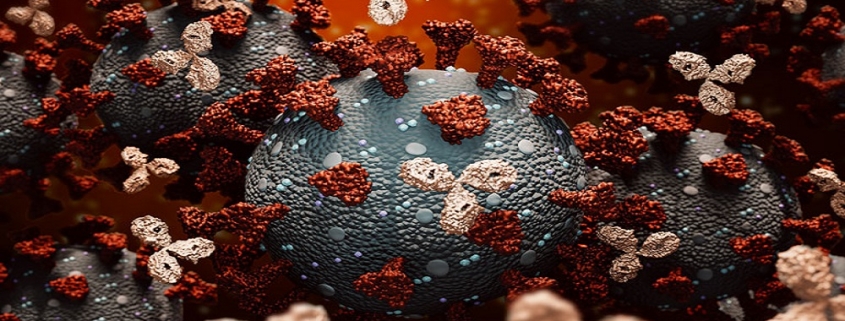The Impact of Increasing Cancer Trend on the Monoclonal Antibodies Market Size
The monoclonal antibodies market is projected to grow at a CAGR of 7.12% to reach US$51.913 billion by 2027, from US$32.076 billion in 2020.
Monoclonal antibody (mAb) treatment is a type of immunotherapy in which monoclonal antibodies bind to specific proteins or cells. Monoclonal antibodies are identical immune cell copies produced from a single mother cell. Because of their monovalent affinity, these antibodies can attach to a specific antigen when delivered. Because of their site-specificity, monoclonal antibodies are a significant tool for detecting or purifying chemicals. Hence, they have major applications in biochemistry, cell genetics, and pharmacology. Therefore, the growing rate of research and development in this segment along with the rise in cancer and other chronic disease rates will be beneficial for the market in the near future.
The increasing rate of cancer patients will propel the market share to grow
The greater efficacy of mAbs in cancer treatment with few or no adverse effects is a primary reason driving the increased demand for monoclonal antibodies among cancer patients. Rising healthcare spending and increased knowledge of mAbs and their efficacy in cancer treatment have resulted in their domination in the worldwide market. The rising frequency of chronic illnesses such as cancer, cardiovascular disease, and others is raising the demand for biologics, which is expected to drive the monoclonal antibodies market. Similarly, expanding applications of mAb treatments for targeted therapies, as well as raising awareness of such medicines among patients and clinicians, are likely to contribute considerably to market growth. For example, the National Cancer Institute’s Cancer Centers Program is developing criteria for multidisciplinary cancer centers focused on cancer prevention, diagnosis, and treatment. Such measures are projected to have a favorable impact on category growth. According to the World Health Organization, the global number of cancer cases is expected to rise from 18.0 million in 2018 reaching 24.1 million by 2030. Moreover, according to the American Cancer Society, there will be 1.9 million new cancer diagnoses and 609,360 cancer deaths in the United States in 2022, amounting to around 1,670 fatalities each day. Therefore, the major factors driving the market’s growth are an increase in cancer prevalence, an increase in demand for cost-effective biosimilar monoclonal antibodies, as well as the introduction of technically sophisticated genetic platforms.
The increasing initiatives are taken by companies to invest in R&D and other factors will be lucrative for the market size
An increase in research collaborations for the creation of a robust drug pipeline, an increase in patient and physician awareness of the uses of monoclonal antibodies (mAb) therapy, and an increase in the approval of blockbuster mAbs for a broad range of uses all contribute to the market’s growth. Furthermore, the increasing trend of pharmaceutical company investments in human mAb research, as well as increased demand for human antibodies, are driving market expansion. For instance, Ono Pharmaceutical Co., Ltd. and Neurimmune AG joined up in January 2022 to develop mAb medicines targeting novel therapeutic targets for neurodegenerative illnesses. Such activities are projected to create new growth prospects and boost the market growth.
Additionally, Sanofi S.A. and Blackstone Life Sciences, for example, announced cooperation in March 2022 to accelerate the development of a subcutaneous formulation of Sarclisa mAb for the treatment of patients with multiple myeloma. Similarly, Sanofi S.A., a France-based pharmaceutical and healthcare company that specializes in drug development, growth, manufacturing, and commercialization, announced a major partnership with Seagen Inc., a US-based healthcare company specializing in the design and commercialization of novel, effective monoclonal antibody-based cancer treatments, in March 2022. The cooperation has plans to design, develop, and sell ADCs for up to three cancer targets using Seagen’s and Sanofi’s unique monoclonal antibody (mAb) and antibody-drug conjugate (ADC) technology.
COVID-19 Analysis
The market size for monoclonal antibodies had witnessed a huge spike with COVID-19 positively influencing the market by encouraging the number of R&D platforms to increase awareness. During the COVID-19 outbreak, several companies launched methods and techniques to enhance their research and development departments which have additionally been lucrative for the market to surge in the upcoming years. For instance, SPK001, the first anti-SARS Cov2 monoclonal antibody candidate of SpikImm, a French biotechnology firm founded by Truffle Capital, was tested on three initial cohorts of healthy volunteers in October 2022 and demonstrated excellent tolerance in the context of a Phase 1 clinical study, labeled as a “national priority” by CAPNET (National Steering Committee for Therapeutic Trials and other Research on Covid-19). The European Commission (EC) authorized Bristol Myers Squibb’s combination medication of OPDIVO and Yervoy in June 2021 to treat patients with malignant pleural mesothelioma. This will lead to greater market availability of the product line. Similarly, Regeneron announced a cooperation with the US Department of Health and Human Services (HHS) in February 2020 to develop novel monoclonal antibody therapies to treat COVID-19 infection.
According to analysts, the North American region is anticipated to witness growth during the forecasted period.
Based on Geography, the monoclonal antibodies market is divided into North America, South America, Europe, the Middle East and Africa, and Asia Pacific. The North American region is expected to account for a considerable amount of market share due to the rising trend of healthcare expenditure in addition to the growth of cancer rates. According to the American Cancer Society, there will be over 1.8 million new cancer diagnoses and around 606,520 fatalities in the United States year 2020. By 2060, the US population is expected to contain around 24% geriatric persons aged 65 or older. According to the Centers for Condition Control and Prevention, six out of every ten persons in the United States have a chronic disease, resulting in an annual healthcare expense of $3.5 trillion.



